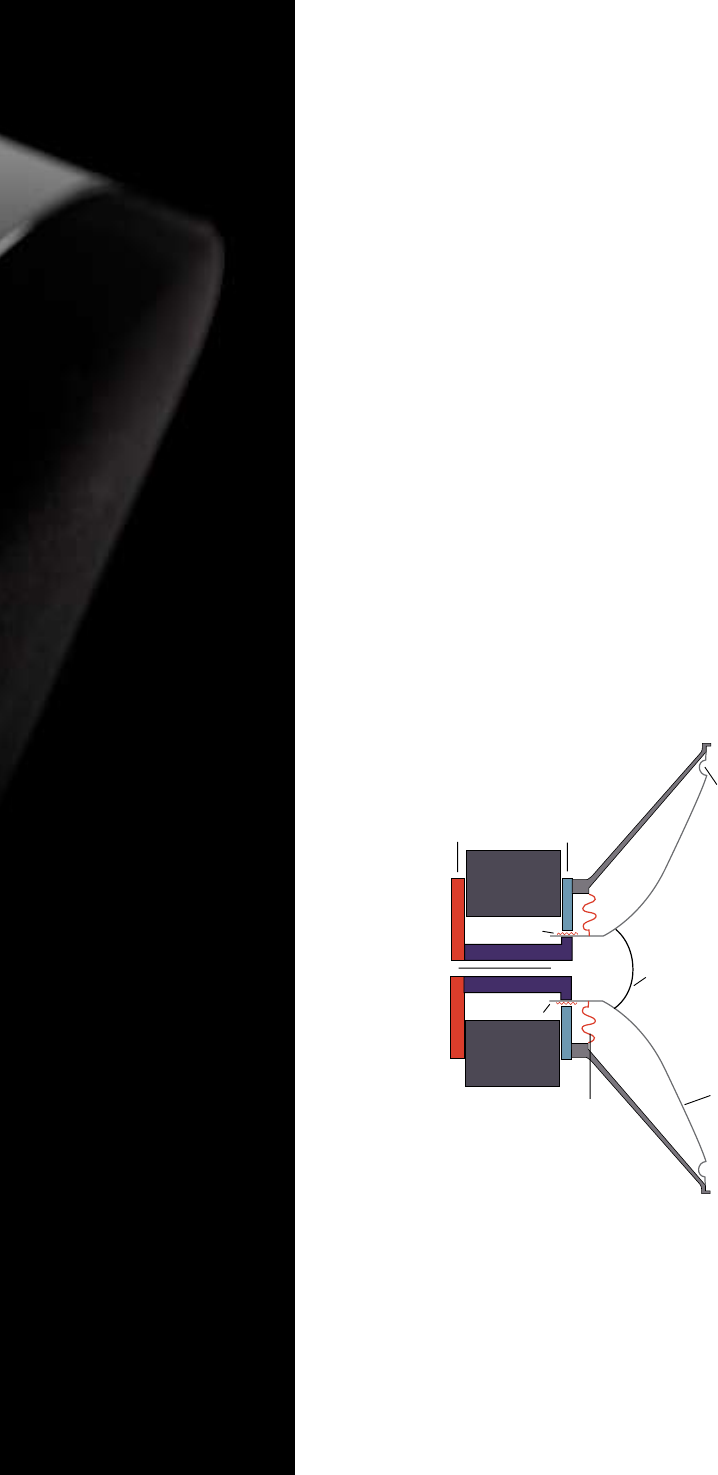
closer
approach...
A moving-coil speaker consists of a
wire coil suspended inside a magnet.
When an audio signal passes through
the coil a varying magnetic field is set
up which interacts with the magnet and
causes the coil to move back and forth.
A cone (or in the case of high frequency
speakers, a dome) is attached to the
coil, which compresses and rarifies the
air generating sound waves.
Because large speaker drive-units
cannot reproduce high frequencies
well, and small ones cannot reproduce
low frequencies at all, practical hi-fi
loudspeakers use two or more drive-
units connected via a ‘crossover
network’ which divides the frequencies
between the bass and the treble units.
Additionally, because even a large
bass- unit is very small compared to the
length of a low-frequency sound wave,
some form of box is needed to prevent
the waves from the back of the cone
cancelling the sound from the front.
Moving-coil speakers have undeniable
advantages of cost and ease of
manufacture, and the cabinets can be
designed in many different shapes, sizes
and finish. However, the cabinet is also
a prime source of colouration in the
bass region. Additionally, because the
cone of a bass-unit is large and heavy,
it cannot start and stop instantaneously.
Some of the energy is stored and
releases over time, causing smearing
and ‘boom’ in the bass. In the cross-
over region, where not only are the
masses between the drive units hugely
dissimilar but so are their dispersion
patterns, this shows up as unevenness
of response and a confused image,
precisely in the critical area where the
ear is at its most sensitive.
The moving-coil conundrum
The case for a
Rear Suspension
Chassis (or Basket)
Speaker Cone
Dust Cap
Air Vent
Pole Piece
Coil Former
Voice Coil
Back Plate
Front Plate
Flexible
Surround


















